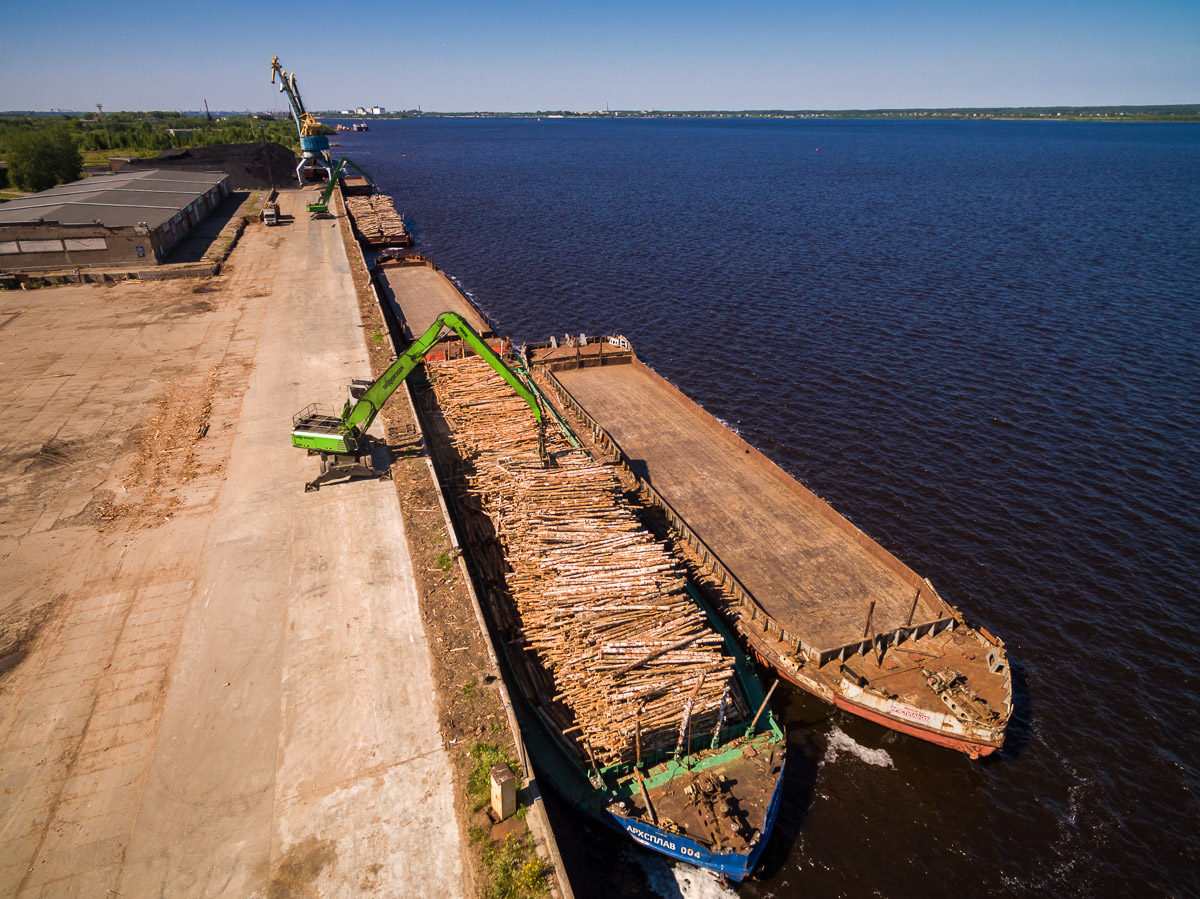Forest Industry Innovation Cluster "PomorInnovaLes" has prepared a list of recommendations on conservation of biodiversity in the certified forest areas. The document is based on the professional opinion and evaluation of the cluster’s timber procurement enterprises, small, medium and large businesses, and environmental organizations.
The roundtable discussion was mainly dedicated to the review of best practices in the conservation of biodiversity when timber harvesting, discussion of topical issues of biodiversity conservation when timber harvesting as well as exchange of experience in the field of biodiversity conservation between the participants of the event.
During the discussion of the impact of multi-operational equipment on waterlogged soils when harvesting wood, speakers focused on the following issues in terms of mechanical damage, soil compaction and waterlogging, and development of erosion processes:
- During summer harvesting on the waterlogged soils, in case of insufficient number of felling debris, the track depth can reach 60-70 cm, however, during the first decade they do not increase, and there is sloughing and vegetal invasion observed.
- In the felling areas, in the tracks soil compaction is observed, and it does not occur in the inter-track space and forest swaths. Therewith, the maximum compaction is achieved in the first years after logging. In subsequent years, soil compaction decreases and by the 15-year period it almost reaches the indicators of soil compaction in the swaths where the movement of equipment was not carried out.
- The processes of growth of grass-shrub and moss-lichen layers on the technological corridors occur intensively and contribute to the consolidation of existing tracks and to the prevention of erosion processes.
- It is necessary to perform monitoring of seasonal phenomena of the beginning and the end of spring and autumn waterlogged periods, which is related to climate change.
When discussing the issues of biodiversity conservation in the forest planning documents, the participants of the discussion proposed to indicate the following in the forest development plans: characteristics of specially protected natural reservations and objects, plans for the development of ecological networks and conservation of biodiversity; information on the presence of rare and endangered species of trees, shrubs and other forest plants; description of existing and planned forest infrastructure facilities and water bodies; planned measures for the protection of flora and fauna species.
As a result of the roundtable discussion on the conservation of intermittent streams in the forest areas, the participants proposed to maintain the buffer zone along the intermittent stream from both sides in the form of a strip adjacent to the channel or forestless flood plain near the channel, with a width equal to a swath half but not less than 8 m. They also proposed not to construct logways and not to place loading areas in the buffer zone but to preserve windfirm trees, new growth, undergrowth and young growth.
In addition to that, in the buffer zone, it was proposed to preserve particularly valuable trees and shrubs growing immediately next to the stream ensuring its shading, and to stop works causing damage to the soil and ground cover – constructing logways, placing loading areas, preparing soil for forest planting, etc.
Tree felling in the buffer zone should be carried out taking into account minimization of impact on the soil and ground cover, it is also necessary to avoid accumulation of the felling debris in the buffer zone.
In the areas near the intermittent streams, it is recommended to preserve the maximum possible number of dead wood elements of different species and at different stages of decomposition - dry forest, high stumps and windfall. Wood debris can absorb a large amount of water, accumulate it and slowly give it back while maintaining the regime of intermittent stream and humidity of the adjacent areas.
To reduce risk of intensification of the already severe natural erosion, it is recommended to prevent the entire hollow along which the stream flows or at least 20 m from each side of the stream channel or its forestless flood plain from felling, access of vehicles and placement of loading areas.
The roundtable discussion also addressed conservation of the breeding grounds of rare bird species in the Arkhangelsk region.
As part of the discussion, the participants considered the practical measures aimed at the protection of birds of prey in the process of timber harvesting, including identification and conservation of breeding grounds when planning economic activities, allocating and developing plots, conservation of potential breeding grounds as well as monitoring of permanent breeding grounds.
Based on the thorough consideration of the biodiversity conservation problems in the certified forest areas, the cluster document includes a number of recommendations addressed to the relevant authorities, public and forestry organizations.
Thus, the Ministry of Natural Resources and Forestry Complex of the Arkhangelsk region is invited to create a system for transmission of data on the location of rare and endangered species and other conservation values in order to prepare materials for the justification for allocating designated areas of forest and protective forest, and also to consider the practicability of creating a resource for accumulation of data on the rare and endangered species included in the official Lists of the Russian Federation and Arkhangelsk region.
Forestry enterprises and the World Wide Fund for Nature (WWF) of Russia should continue working on the allocation and conservation of old-growth forests as well as on the creation of an ecological framework; they should develop and implement a procedure for identification of old-growth forest. It is also appropriate to make use of the Ilim Group experience of the allocation of intermittent and perennial streams using unmanned aerial vehicles when performing the inventory of forest fund and also when allocating and defining the boundaries of wetlands.
Note
The constitutive meeting of the cluster "PomorInnovaLes" participants was held on 25 September, 2014.
The Order on the creation of Forest Industry Regional Innovation Cluster was issued by Igor Orlov, the Arkhangelsk region Governor, on 25 November, 2014.
The Association "Forest Industry Regional Innovation Cluster of the Arkhangelsk Region "PomorInnovaLes" was registered on 25 March, 2016.
The cluster "PomorInnovaLes" includes 43 participants, including logging and woodworking enterprises of the region, educational and scientific institutions, and transport and energy infrastructure companies in the region.
The main bodies of the cluster are Arkhangelsk PPM JSC, GC Titan, Sawmill 25 CJSC, and Arkhangelsk Plywood Factory JSC.




